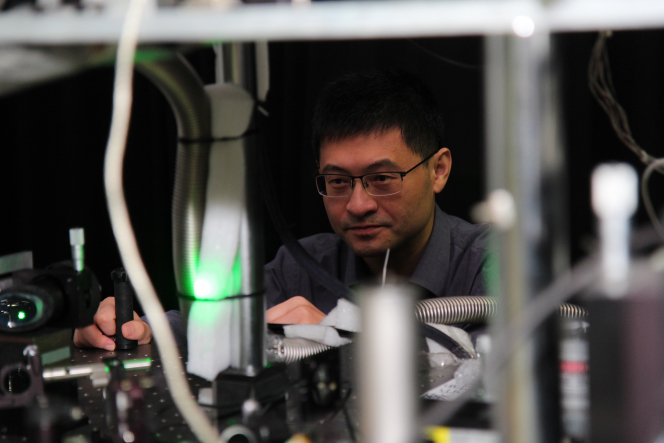Media
HKU physicist Professor Cui Xiaodong receives Croucher Senior Research Fellowship award
08 Dec 2016
The Nobel Prize in Physics 2010 honoured two scientists at the University of Manchester: Andre K. Geim and Konstantin S. Novoselov, for their success in producing, isolating, identifying and characterizing the two-dimensional (2D) crystal, graphene.
It came as a surprise to the physics community when the two scientists presented their results on graphene structures in Science in October of 2004, which eventually led to their awards in 2010.
Graphene is a transparent conductor which is one atom thin. This first discovery of a 2D material in a real life situation has opened a new dimension for both fundamental studies and future applications. It opens the door to exploring physics in 2D atomic system. It also provides the basis for innovative research on future applications including developing new materials.
After the success in graphene, more atomically thin layers have been identified. The research team of Professor Cui Xiaodong, Professor of Physics at the University of Hong Kong, has been actively exploring the physics properties of emerging 2D semiconductors, particularly optical properties of 2D transition metal dichalcogenides (TMDs). Their work has contributed to the building of “Future Electronics”.
Professor Cui said: “The atomic 2D crystals have been attracting tremendous attentions from both fundamental research and application-oriented research. For scientists in solid state physics, the atomic 2D crystals offer an unprecedented platform for exploring physics in 2D systems.”
He added: “As the material dimension shrinks to atomically thin, the unique features arising in the systems could be utilized towards future electronics.” Professor Cui’s team is one of the international pioneering teams in the research on Valleytronics. While Conventional semiconductor electronics use the flow of electric charge, Valleytronics involves utilizing "valleys", a new degree of freedom of electrons (as information carriers) in a controlled way.
A paper published in Nature Nanotechnology (2012) by Professor Cui and other researchers described the control of valley degree of freedom of electrons in 2D semiconductors using light. The findings of the experiment pointed the way to conceptual new devices based on valley degree of freedom of electrons.
(Please click here for Professor Cui Xiaodong’s biography)
Croucher Senior Research Fellowships/ Croucher Senior Medical Research Fellowships
The Croucher Senior Research Fellowships scheme was first introduced in 1997. It is awarded to local academics who have excelled in scientific research work as judged by leading international scientists invited to provide confidential reviews of candidates nominated in a competitive exercise. Funds are awarded to the universities of the fellowship recipients, enabling the university to recruit replacement teachers to take over the award winner’s duties for the period of the fellowship. This enables the awardees to devote more time and effort to research work.
The value of each award includes a HK$2 million research grant and the cost of a replacement teacher/clinical medical staff for a twelve-month period, currently stands at a maximum of HK$938,400 for the Senior Research Fellowships and HK$2,288,400 for the Senior Medical Research Fellowships.
For media enquiries, please contact:
Communication and Public Affairs Office Ms Melanie Wan (Tel: 2859 2600, email: melwkwan@hku.hk), or Faculty of Science Ms Cindy Chan (Tel: 3917 5286/ 6703 0212, email: cindycst@hku.hk).

